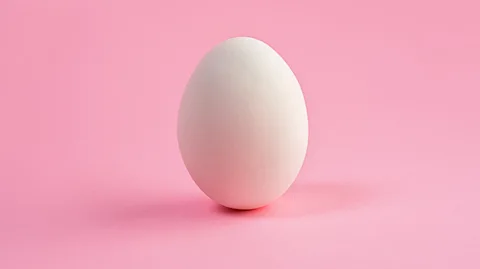 Getty Images
Getty ImagesScientists have cracked the perfect way to boil an egg – startling, requires half an hour.
One of the undisputed facts of life that is extremely difficult to cook a perfectly boiled egg. Mornings can often be frustrating issues when, after breaking the shell and immersed your toasted soldier in what you hope will be a culinary pleasure, instead find that your yellow is dry and crumbly, or Even worse, the egg white is a thin watery mess.
The problem is that the yellow yellow and the albumin (the white part of the egg) cook at two different temperatures. Yolk requires a temperature of only 65C (149f) to cook while the album needs a a little more heat at 85C (185f).
Therefore, the conventional methods for cooking eggs represent a compromise between those two seemingly incompatible truths. Hard-Bil an egg in 100C (212f), and white will soon become soft and straight. However, yellow yellow will be fully placed – which is best if you like that kind of thing, but frustrating if you are after a soft, soft yellow. Another method of cooking an egg, known as Sous videoIncludes egg placing in a water bath at temperatures between 60 and 70C (140-158f) per hour. This leaves yellow yellow yellow, but white can be left thin and clear.
However, don’t worry, as researchers have now discovered the perfect method of boiling an egg. Moreover, they have shown that the result is not only delicious but also better for you.
 Getty Images
Getty ImagesIn their new paperResearchers led by Pellegrino Musto, a scientist working at the Italian National Research Council in Pozzuoli, first simulated the egg cooking process using the dynamics of calculation fluids (CFD). CFD is the science of using computers to predict how fluids and gases flow based on the physical laws that regulate them, such as maintaining mass, momentity and energy.
Simulations suggested a new method – someone is likely to be completely unknown to most amateur chefs and chefs – that can deliver superior results. The approach, which the authors call periodic cooking, includes the alternation between cooking the egg in a pan of boiling water held at 100C (212f), and placing it in a warm bowl held at 30C (86f). To get the best results, the egg should be transferred between two temperatures every two minutes for a total duration of 32 minutes, so it is probably no longer suitable for chefs who want to dive inside and outside the kitchen leaving the egg their unattended.
If you are willing to try, however, your rewards will be abundant. When scientists tried the new method in real life, the resulting egg was extraordinary. Researchers confirmed this superiority by analyzing the structure, sensory qualities and chemical structure of their eggs perfectly boiled using nuclear magnetic resonance and high resolution mass spectrometer.
 Getty Images
Getty ImagesThe results showed that periodically cooked eggs had a soft yellow similar to that of a Sous video Egg – so far so good. However, unlike cooked eggs Sous videoThe white album was not run and immature, but on the contrary there was a stamina closer to that of a traditional boiled egg. According to the authors of the letter, this is probably because, while temperatures in the white egg white cooked between 35C (95F) and 100C (212f) during cooking, yellow yellow remained at a stable temperature of 67C (153f ) all over.
Perhaps more interesting, chemical analysis found that yellow of eggs cooked periodically contain more polyphenole – a group of micronutrients found mainly in plants, and sought their health benefits – than eggs cooked by other methods. This class of compounds is known for its antioxidant and anti-inflammatory properties. plant Do them as protection Against stressful environmental conditions such as UV radiation, drought or insect predators. However, research shows more and more that people can benefit. For example epidemiological studies Suggest that high dietary intake of polyphenols is associated with a decrease in the risk of cardiovascular disease, specific forms of cancer and neurodegeneous diseases.
Even more reasons to try periodically cooked eggs next time you love eggs and soldiers for breakfast.
For trusted knowledge of better health and welfare rooted in science, sign up at Health Fix BulletinWHEREAS Essential list gives a selection of the hand of features and penetrations.
For more science, technology, environment and health stories from the BBC, follow us Facebook, X AND Instagram.
